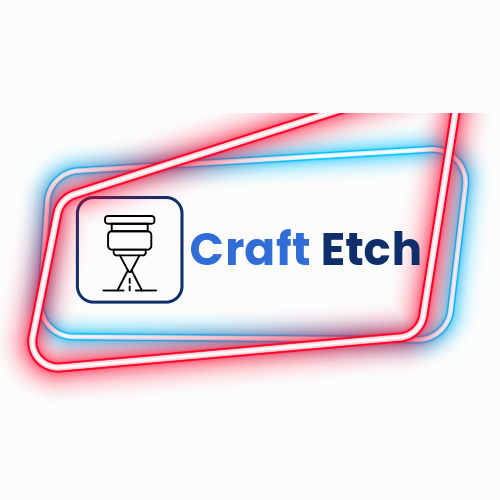Join Workshops
Physical Address
304 North Cardinal St.
Dorchester Center, MA 02124
Fiber Laser Vs Infrared Laser [Don’t confuse yourself]
We often get confused between a fiber laser and an infrared laser. A fiber laser has a laser wavelength of 780-1100 nm whereas an infrared laser makes only a 1064 nm wavelength laser beam. A fiber laser is powerful, expensive, and more versatile than infrared lasers.
In this article, we will present a detailed comparison between both lasers to assist you in choosing the right machine.
In short, fiber lasers are industrial-grade lasers that mainly cut, engrave, and weld metal but infrared lasers are usually low-powered, portable, or interchangeable with the other types of laser diodes, mainly suitable for smaller-scale metal laser engraving.
As an example, an automotive company needs a fiber laser to place serial number/metal markings on each of its parts whereas you can steel engrave any small metal items using an infrared laser. Both types of laser machines have their own positive and negative sides.
Key Differences
Based on my first-hand experience with both engravers, here’s a straightforward comparison delineated by factors:
To summarize, here’s a quick comparison:
| Feature | Fiber Laser | Infrared Laser |
| Wavelength | 700 – 1100 nm | Fixed at 1064 nm |
| Material Compatibility | Best for metal engraving, can do deep marking, engraving, and sometimes welding | Suitable for metal and plastic engraving on a smaller scale, not for deep engraving |
| Efficiency and Power Usage | High initial peak power, can reach up to 10000 watts | Lower continuous power usage (1-2 watts), can reach up to 15000 watts |
| Precision and Quality | Highly precise, consistent quality, and reduced spot size for intricate designs | Less precision, broader beam good for thicker material but not as fine |
| Maintenance and Durability | Low maintenance, solid-state construction, up to 100,000-hour lifespan | Higher maintenance, 20,000-hour lifespan before parts need replacing |
| Cost and Return on Investment | Higher initial cost with lower operating expenses | Lower initial cost but higher operational costs, geared for smaller scales |
| Engraving Ability for Metals | Can engrave metal in color, suitable for bare metals | Cannot engrave in color, can anneal metals to visualize patterns but less effectively |
| Lifespan Expectation | Generally over 100,000 hours for fiber units | IR lasers have about a 20,000-hour lifespan, though recent tech may last longer |
Wavelength and Material Compatibility
Fiber lasers, operating typically at a range of 700 to 1100 nanometers, are the go-to for metal engraving, creating high-precision marks on materials like steel and aluminum. Remember the time I engraved on stainless steel? A fiber laser’s finesse was unmatched.
![Fiber Laser Vs Infrared Laser [Don’t confuse yourself] 1 Color laser engraving using fiber laser](https://craftetch.com/wp-content/uploads/2024/07/Color-laser-engraving-using-fiber-laser-822x1024.webp)
Infrared lasers, a handy alternative to the fiber laser typically generate a laser beam at a wavelength of fixed 1064 nm. Such lasers are suitable for metal and plastic engraving on a smaller scale.
In comparison, fiber lasers are suitable for deep metal marking, engraving, and metal welding sometimes.
Efficiency and Energy Consumption
Fiber lasers often consume high power due to initial peak power but reach up to 10000 watts. Conversely, IR lasers consume 1-2 watts constantly but can reach up to 15000 watts.
Mostly, infrared laser modules are found in a portable version or as a changeable laser diode which ultimately economically benefits the small business or the user in minimizing approximately 35% of regular operating cost and more than 80% on initial investment.
Precision and Quality
Precision was always a key for my intricate designs, something fiber lasers offered readily with their focused beam and reduced spot size. The beam stability ensures consistent, high-quality marks. However, if my project required engraving on a thicker piece of acrylic, the broader beam of an IR laser, despite less precision, was exceptionally beneficial to penetrate deeply and weave a strong design.
A fiber laser will always give you the best precision especially while working with bare metal. Alternatively, an infrared laser often anneals bare metal by changing its atomic variables to visualize the pattern.
To be very honest, an infrared laser cannot make deep engraving in metal workpieces like fiber lasers.
Maintenance and Durability
Maintenance speaks to convenience—fiber lasers, with their solid-state construction requiring little to no adjustments, suited my busy schedule since my fiber machine needed far less tending to than my IR unit.
Emphasizing durability, fiber units can last up to five times longer, topping 100,000 hours, unlike IR lasers which average around 20,000 hours before needing a part replacement.
However, a recent release of Lumitool F20 anticipates that the operating lifetime would be close to 100,000 hours even if it features dual infrared laser technology in a portable version. (The company named that as a fiber laser though).
Cost and Return on Investment
Initial cost, albeit higher for fiber lasers, is offset by low running expenses and less frequent maintenance needs, characteristics highly valued in the production-led context of my past projects. For example, a 30W fiber laser would cost around $6,000 whereas a small infrared laser is available at a budget of below $2,000.
For those dealing in primarily metal materials & shiny plastic at a smaller scale, the lesser initial investment in an IR laser makes more economic sense despite the higher operational costs.
Each engraving technology carves out its niche—fiber lasers for metal precision and low maintenance, with a dominant display in operational efficiency and life span; IR lasers offer an embrace to various non-metal substrates and demand respect for the sheer power in carving depth.
Ability to engrave metal in color
A MOPA fiber laser (a type of fiber laser) can efficiently engrave the metal in color using its controlled pulse frequency.
In contrast, the IR laser engravers cannot engrave in color like the way MOPA fiber lasers do. However, using IR lasers, you can still bring color contrast through annealing metal at different temperatures but the result would not even be close to the fiber laser engravings.
What is ideal for you between fiber and infrared laser?
You cannot cherrypick one laser between a fiber laser and an IR laser. Fiber lasers are always useful in the industrial and commercial sectors where hundreds or thousands of metal/plastic components need to be marked with a laser beams. In contrast, portable infrared lasers are only useful when you are a hobbyist or running a small laser engraving business. Such infrared laser diodes help engraving metal items which are not done with CO2 or diode lasers.
More importantly, infrared lsaers are easily carryable since they are mostly found in a portable version. Alternatively, fiber laser machines are typically large and targetted for industrial users.



